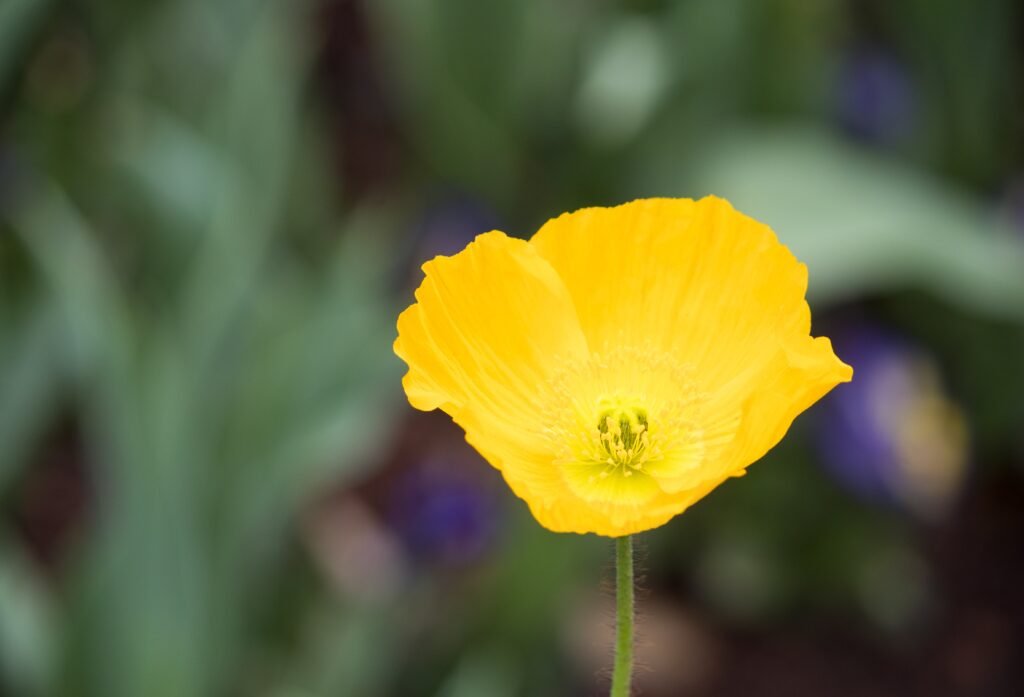The Iceland Poppy plant, also known as Papaver nudicaule, is a beautiful flowering plant native to the subpolar regions of Europe and North America. It boasts vibrant, cup-shaped flowers in a variety of colors, including yellow, orange, pink, and white. With its delicate petals and slender stems, the Iceland Poppy adds a touch of natural beauty to any garden.
About Iceland Poppy:
Iceland Poppy is a beautiful plant that comes in different types such as Icelandic, American-Icelandic, and Meadow Poppy. Each type has its own unique characteristics and growth habits.
The Iceland Poppy has a biennial life cycle, meaning it completes its life cycle over the course of two years. It blooms from late spring to early summer and offers a burst of color to any garden.
Characteristics:
Iceland Poppy is a plant that attracts bees, butterflies, and hummingbirds, making it a great choice for pollinator gardens. It is also easy to grow and maintain, making it suitable for both beginner and experienced gardeners. Although it is not edible, it has a mild fragrance that adds a pleasant aroma to the garden. Additionally, Iceland Poppy has an extended bloom time, providing continuous flowers throughout the blooming season. It is mainly used as an ornamental plant due to its vibrant colors and delicate petals.
Growing Conditions:
Iceland Poppy prefers growing conditions that include well-draining soil and full sun to part shade exposure. It thrives in cooler climates and is often grown as an annual in warmer regions. It is also important to note that Iceland Poppy prefers cooler temperatures and may not tolerate extreme heat.
Resistance:
Iceland Poppy is not resistant to deer or rabbit damage. However, it is generally resistant to rust, fusarium wilt, downy mildew, and powdery mildew. It is important to provide proper care and monitor for any signs of disease or pest infestation.
| Season | Depth | Height | Spacing | US Hardiness Zone |
|---|---|---|---|---|
| Spring and Fall | 1/16 inch | 1 to 2 feet | 12 inches | 2 to 9 |
Plant Care Instructions
Light Requirement
Iceland Poppies thrive best in full sun to partial shade. They can tolerate full shade but may not flower as abundantly.
Water Need
Iceland Poppies prefer regular watering but let the soil dry out between waterings. Overwatering can lead to root rot, so it’s better to underwater than overwater.
Fertilizer
Iceland Poppies don’t require heavy fertilization but can benefit from a balanced fertilizer such as a 10-10-10 or 20-20-20. For organic options, you could use compost, manure, or organic granular fertilizers.
Pruning
Deadhead spent blooms regularly to encourage more flowering. It’s best to remove any dead or dying foliage to maintain the plant’s overall health and appearance.
Toxicity
Iceland Poppies are non-toxic to humans and pets, making them a safe choice for households with furry friends.
Common Issues
Common issues include fungal diseases like powdery mildew and downy mildew, which can be prevented by providing adequate air circulation and avoiding overhead watering. Aphids and snails can also be occasional problems, so keep an eye out for these pests and take appropriate measures to control them.
Culinary Benefits:
- Iceland poppies are not commonly used for culinary purposes.
- However, some people do use the petals of Iceland poppies to garnish salads or add a pop of color to desserts.
- Their delicate and vibrant flowers can also be used to create visually appealing floral arrangements for cakes or other dishes.
- It’s important to note that while Iceland poppies are generally considered non-toxic, some individuals may have allergic reactions to certain flowers.
Medicinal Benefits:
- Iceland poppies are not typically used in traditional herbal medicine.
- However, they are known for their calming and soothing properties, which can be beneficial for relaxation and stress relief.
- Some individuals may find the fragrance of Iceland poppies to be uplifting and mood-enhancing.
- As with any plant, it’s always best to consult with a healthcare professional before using Iceland poppies for medicinal purposes.
Companion Plants for Iceland-Poppy:
- Asters: These beautiful perennials come in a variety of colors and add depth to your garden. They also attract butterflies and bees which help pollinate the poppies.
- Echinacea: These coneflowers provide food and shelter for birds, bees, and butterflies, while also deterring deer from eating your poppies.
- Foxgloves: These delicate flowers attract butterflies and bees which help pollinate the poppies. They also add a touch of whimsy to any garden.
- Hydrangeas: These lush blooms provide shade for the poppies and add texture to your garden. They also attract hummingbirds, butterflies, and bees which help pollinate the poppies.

